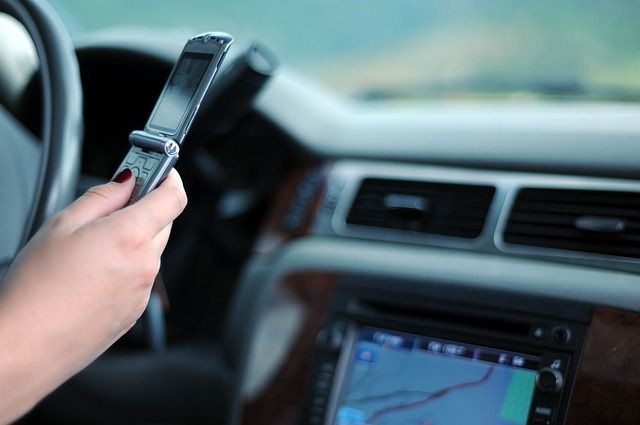Sending Text Messages On Your Smartphone Changes The Rhythm Of Your Brain Waves

The ability to multitask is valued in our society as we juggle deadlines, projects, and multiple demands. The pressure to increase our productivity tempts us to use our smartphones, even when we're behind the wheel. A new study shows there’s another reason to resist the temptation to text while driving.
The study, published in the journal Epilepsy & Behavior, found using smartphones to send text messages can change the rhythm of brain waves.
"We think active text messaging actually creates an electrophysiologic potential that's unique to some type of personal electronic device," said Dr. William Tatum, lead author of the study, and professor of neurology and director of the epilepsy monitoring unit and epilepsy center at Mayo Clinic in Jacksonville, Fla, in a press briefing at the 2015 American Epilepsy Society meeting.
Tatum and his colleagues evaluated data from 129 patients — 53 had epileptic seizures, 47 had nonepileptic seizures, and 2 were dual-diagnosed — seen at the Mayo Clinic Florida and Rush University Medical Center, to discover how our brains work during text messaging, using video EEG monitoring. This technology is commonly used to diagnose epilepsy, which is done over several days. The participants' brain waves were monitored over a period of 16 months while they were asked to perform activities such as message texting, finger tapping, and audio cellular telephone use. Tests on attention and cognitive function were also completed.
A unique "texting rhythm" was found in approximately one in five patients who were using their smartphones to text while their brain waves were monitored. It did not occur with other activities such as voice calls, speech, or movement. There was no association with age, gender, epilepsy type, MRI results, or EEG lateralization in patients with focal epileptic seizures.
Next to smartphones, the texting rhythm was also found in iPad users. The researchers hypothesized that the presence of a different brain wave rhythm while using mobile, handheld devices might be caused by their smaller screens, which require more focus.
The researchers described the rhythm as a "reproducible, stimulus-evoked, time-locked generalized frontocentral monomorphic burst of 5 to 6 Hz theta, consistently induced by active text messaging."
They do not know why the pattern emerges during texting, but they hypothesize it may reflect some kind of brain reward system. For example, our smartphones “hit” our reward system when we check them, get a message, or read information that catches our interest. This could spike our dopamine levels, giving us the impulse to check our phones periodically. The prefrontal cortex — responsible for impulse control — is unable to keep us from looking when it comes to driving and using our phones.
Evidently, the findings do have implications for texting and driving. Tatum noted: "There is now a biological reason why people shouldn't text and drive - texting can change brain waves," he said in a statement.
Texting and driving reduces our productivity because our brain is forced to jump between tasks rather than simultaneously focus on both. Our brain’s cognitive load — the amount of mental activity it can engage in at once — is compromised when we’re texting or having a phone conversation while driving. Our driving will not be as good because the brain has less cognitive load to focus.
More research supports the notion that using cell phones while driving is risky. Smartphones are not only changing how we communicate with one another, but also how our brain functions. So next time you’re driving, wait to send that text message — it could save your life.
Source: Tatum WO, DiCiaccio B, Yelvington KH. Cortical processing during smartphone text messaging. Epilepsy & Behavior. 2016.



























